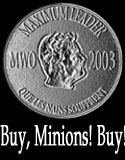The M-16 needs to be replaced.
It may be more accurate than the AK. It may have a longer range.
But it is intolerant of dirt and moisture.
It is the ideal weapon for ideal conditions.
It‚ÄövÑv¥s just too bad that we don‚ÄövÑv¥t ever fight under ideal conditions.
Kim Du Toit made me aware of another limitation; the length of the M-16 makes it awkward to use inside of a vehicle. Another reason to scrap it.
Instead of moving to a more technological (read: fragile) model, we should use an assault weapon that is simple, lightweight and durable under a range of weather conditions.
Those requirements seem to be describing the AK-47.
America‚ÄövÑv¥s need to get fancier and fancier with our infantry weapons reminds me of the small arms race at the end of the last century. As a shift to bolt-action magazine-fed rifles sparked the race. Industrial countries with the exception of France, Germany, and England* began issuing weapons of smaller and smaller calibers ‚ÄövÑv¨ increasing muzzle velocity (accuracy) and reducing ammunition weight (which simplifies logistics).
* France did not rush to develop new weapons ‚ÄövÑv¨ they figured that a reliance on firepower would reduce the ‚àö¬©lan, or fighting spirit, of their troops ‚ÄövÑv¨ a position favoring moral over material factors that eerily foreshadowed 1930s Japanese military procurement. France actually chose NOT to distribute machineguns to infantry companies because it was feared that lugging the heavier weapon would slow attack speeds. They would pay for this refusal to modernize in the Great War.
Germany did not join the smaller caliber race largely because of their efficient study of military technology ‚ÄövÑv¨ rather than simply worrying about logistics, their research (somewhat confirmed by their observations of the Crimean conflict) showed that at a certain point, smaller calibers became much less capable of incapacitating enemy personnel. The smaller bullets were moving too fast and punched through flesh quickly, rather than slowing down, deforming, and creating the mushroom effect that leaves behind hideous exit wounds.
England did not move to the smaller caliber because their engagement in colonial conflicts led them to emphasize larger bullets that had stopping power. America eventually followed this model ‚ÄövÑv¨ switching to larger calibers (the .45 pistol) when the Philippine Insurrection showed you had to do more than kill the insurgents; you had to knock them down to keep them from falling into your trench and taking you with them as they died.
Both Russia and Japan learned the folly of worshipping accuracy and weight above impact; both sides small arms were relatively ineffective during their 1904-05 conflict.
But the United States didn‚ÄövÑv¥t seem to learn that lesson (does it surprise you that our military staff system is modeled after the French, not the Germans?) when they adopted the M-16.
And it doesn‚ÄövÑv¥t seem that we have learned from Vietnam and the Gulf Conflicts either. Rather than moving to a more reliable weapon, we are building a better mousetrap with all the bells and whistles. Let‚ÄövÑv¥s hope sanity wins out.


